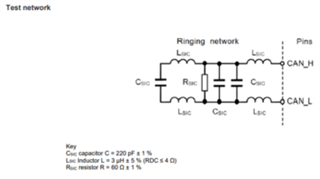Tool/software:
Dear Specialists,
My customer is confirmed with the effect of SIC and has a question.
I would be grateful if you could advise.
---Question
We replaced the CAN FD SIC transceiver "TCAN1472VDRQ1" used in our products with the CAN FD transceiver "TCAN1042HGVD" and checked the ringing waveform.
Could you please see attached PDF file.
As a result, the signal change time became shorter, but the ringing only seemed to be suppressed slightly.
(See pages 4-5 of the attached PDF)
In Figure 4-3 of the PDF document on the SIC of TI's TCAN1462, the ringing seems to be greatly suppressed.
(See pages 1-3 of the attached PDF)
Could you please let me know why the SIC effect of TCAN1472 is little ?
Is it due to differences in network configuration?
Are there any other possible factors?
---
I appreciate your great help in advance.
Best regards,
Shinichi


